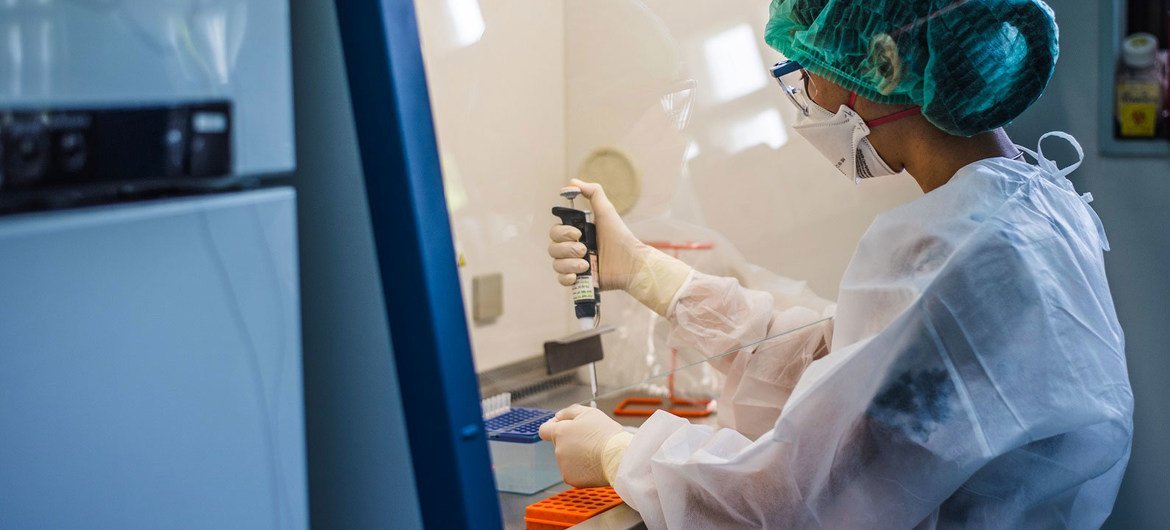According to the agency’s latest surveillance report, antibiotic resistance increased in more than 40 percent of bacteria-drug combinations tracked between 2018 and 2023, with average annual increases ranging from 5 to 15 percent.
“Antimicrobial resistance is outpacing the advances of modern medicine and threatens the health of families around the world.”said WHO Director-General Tedros Adhanom Ghebreyesus.
“As countries strengthen their antimicrobial resistance surveillance systems, we must use antibiotics responsibly and ensure that everyone has access to the right medicines, quality-assured diagnostics and vaccines.”
A ‘silent pandemic’
The report, based on data from more than 100 countries, provides the most comprehensive picture yet of the magnitude of the problem. found that One in three infections in the WHO Southeast Asia and Eastern Mediterranean regions were resistant to antibiotics, compared to one in five in Africa..
Antimicrobial resistance (AMR) occurs when bacteria, viruses, fungi and parasites evolve to resist drugs designed to kill them. This makes infections more difficult to treat, increases the risk of serious illness or death, and threatens decades of medical progress.
The phenomenon, often described as a “silent pandemic,” is driven by the misuse and overuse of antibiotics in humans, animals and agriculture, as well as poor infection control and limited access to quality medicines.
The WHO estimates that bacterial AMR was directly responsible for 1.27 million deaths in 2019 and contributed to almost five million deaths worldwide. If no action is taken, experts warn, resistant infections could cause an estimated loss of $3 trillion in global GDP per year by 2030.

A scientist works in the laboratory of a research center. (archive)
The rise of ‘superbugs’
The report highlights that the greatest threat comes from gram-negative bacteria, pathogens that are very difficult to kill and resistant to multiple drugs.
Among them, Escherichia coli (E.coli) and Klebsiella pneumoniae (K.pneumoniae), two common causes of bloodstream infections, are showing alarming levels of resistance to third-generation cephalosporins, the first-line treatment for many serious infections.
Globally, more than 40 percent of E. coli and 55 percent of K. pneumoniae strains were resistant to these antibiotics, with levels above 70 percent in some parts of Africa. Other essential antibiotics, including carbapenems and fluoroquinolones, are also losing effectiveness against these and other pathogens, such as Salmonella and Acinetobacter.
Growing resistance is “forcing doctors to turn to antibiotics of last resort.” the report warned. These tTreatments are expensive, complex and often unavailable in low-income countries.reducing options and increasing the risk of mortality.
Fragile systems, increasing risks
The report also concludes that resistance is more widespread in countries with weak health systems and limited surveillance capacity, underscoring a cycle in which poor data and fragile health infrastructure fuel worsening outcomes.
While progress has been made in monitoring resistance, significant data gaps remain. Country participation in the WHO surveillance system has more than quadrupled since its launch in 2016, from 25 to 104 countries, but almost half of WHO Member States still do not report data in 2023.
Even among reporting countries, many lack the systems necessary to generate reliable and representative data.
A call to coordinated action
The 2024 United Nations General Assembly political declaration on AMR reaffirmed global commitments to address resistance through a “One Health” approach that integrates human, animal and environmental health.
The WHO said countries must now translate these commitments into concrete actions.
“Our future depends on strengthening systems to prevent, diagnose and treat infections,“Tedros said.”We must also innovate with next-generation antibiotics and rapid point-of-care molecular testing.“



